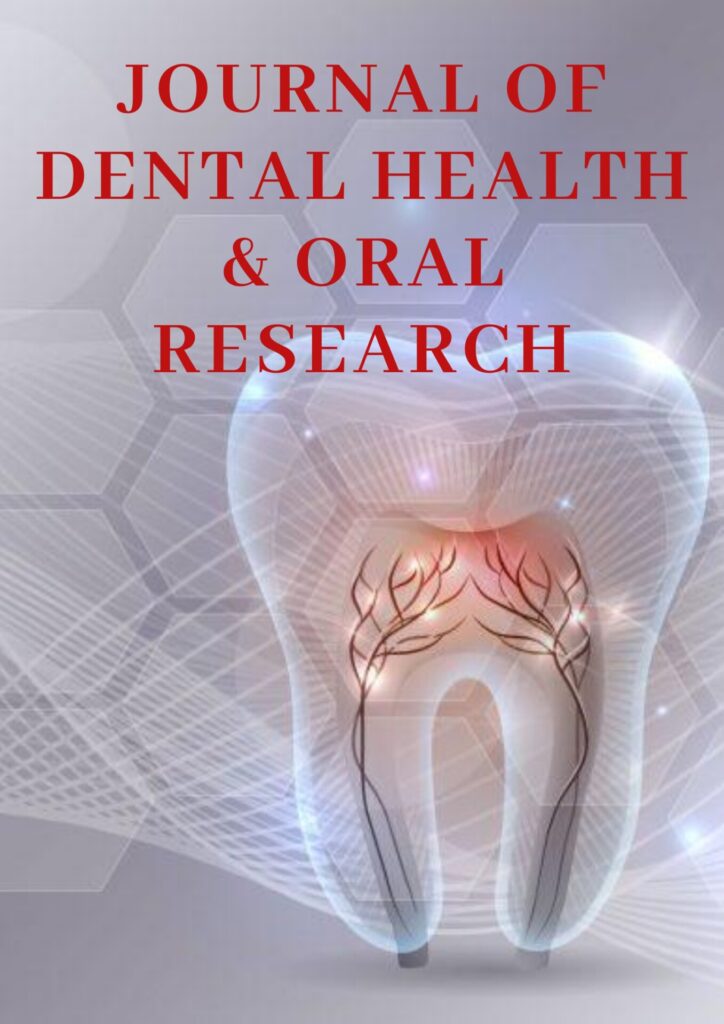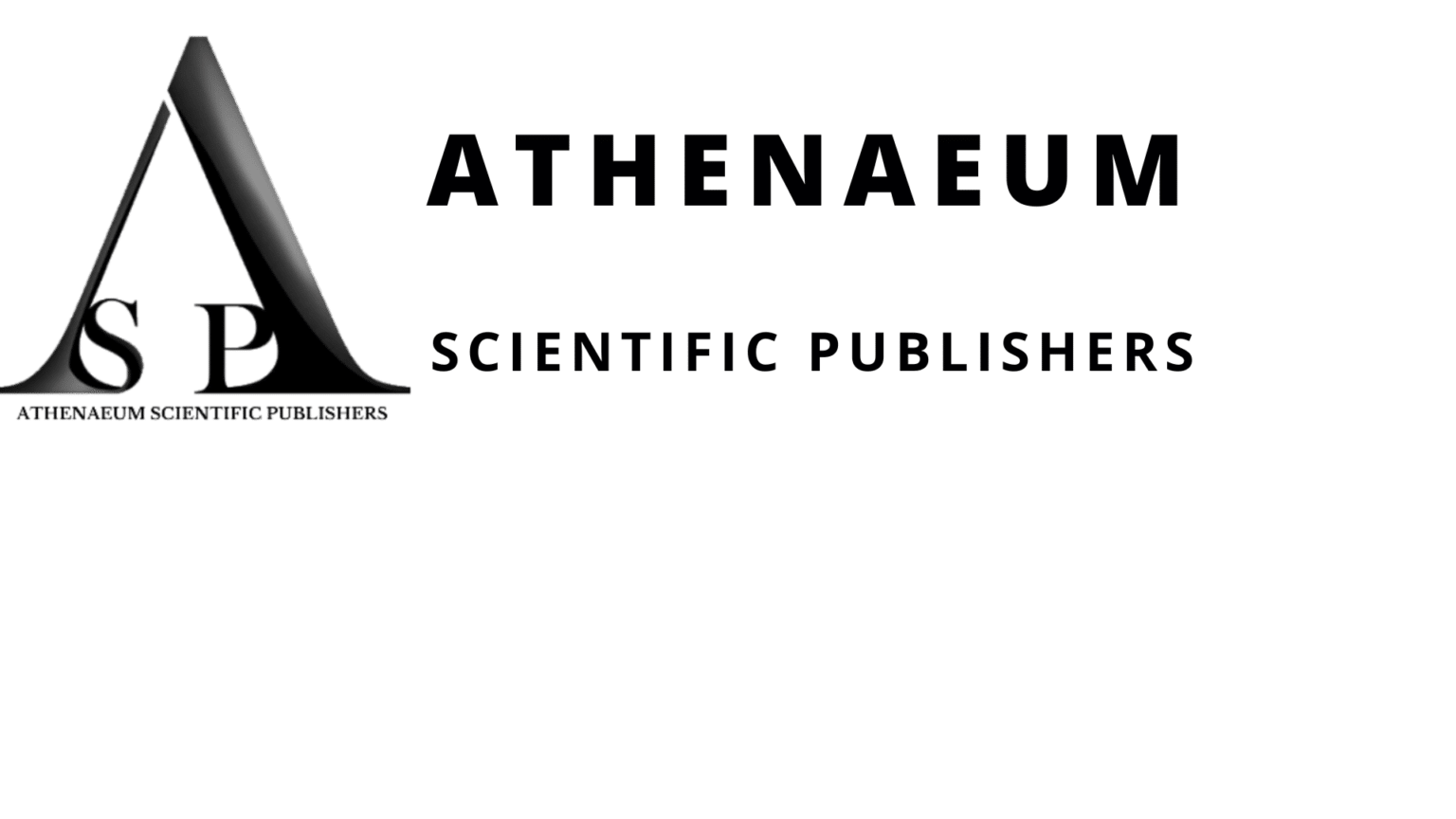Research Article | Vol. 6, Issue 1 | Journal of Dental Health and Oral Research | Open Access |
Statins Can Reduce the Likelihood of Patients Developing Acute Periapical Abscesses
Joseph Katz1, Ilan Rotstein2*, Franklin Garcia-Godoy3
1Professor of Oral Medicine, Department of Oral Diagnostic Sciences, University of Florida College of Dentistry, Gainesville, Florida, USA
2Professor of Endodontics, Herman Ostrow School of Dentistry of USC, University of Southern California, Los Angeles, California, USA
3Professor of Biosciences, Department of Bioscience Research, University of Tennessee Health Science Center, College of Dentistry, Memphis, Tennessee, USA
*Correspondence author: Ilan Rotstein, Professor of Endodontics, Herman Ostrow School of Dentistry of USC, University of Southern California, Los Angeles, California, USA; E-mail: [email protected]
Citation: Katz J, et al. Statins Can Reduce the Likelihood of Patients Developing Acute Periapical Abscesses. J Dental Health Oral Res. 2025;6(1):1-6.
Copyright© 2025 by Katz J, et al. All rights reserved. This is an open access article distributed under the terms of the Creative Commons Attribution License, which permits unrestricted use, distribution, and reproduction in any medium, provided the original author and source are credited.
| Received 31 January, 2025 | Accepted 21 February, 2025 | Published 28 February, 2025 |
Abstract
Background: The aim of this study was to assess the impact of statins on patients with diabetes and smoking comorbidities who subsequently developed Acute Periapical Abscesses (APAs) by reviewing nearly 1.8 million patient medical records.
Methodology: This study investigated the effect of statins on APA incidence in patients by reviewing nearly 1.8 million patient medical records.
Results: The odds of developing APAs were significantly reduced for patients taking certain statins. When adjusting for diabetes comorbidity, all statins studied reduced the OR significantly. When adjusting for smoking comorbidity, atorvastatin and pravastatin reduced the odds of developing APAs by almost 2 times (OR 1.22, p<0.0001) and (OR 1.27, p<0.0001), respectively.
Conclusion: These findings suggest that statins, beyond their lipid-lowering properties, may offer additional health benefits, including a reduced risk of APAs.
Keywords: Apical Abscess; Periapical; Statins
Introduction
Acute Periapical Abscesses (APAs) are severe health risk to patients resulting from microbial infections in teeth or surrounding tissues. If left untreated, APAs can lead to systemic infection and even life-threatening complications. It has been reported that in the United States, more than 400,000 emergency patient visits were due to either pulpal or periapical diseases resulting in medical charges totaling more than $160 million [1]. More than 60,000 hospitalizations were primarily attributed to periapical abscesses [2].
One-quarter (25%) of Americans over 40 take statins to reduce the risk of myocardial infarction, ischemic stroke and other complications of atherosclerotic disease [3]. Statins, such as atorvastatin, simvastatin, rosuvastatin and pravastatin, are widely prescribed to lower Low-Density Lipoprotein (LDL) cholesterol, commonly known as “bad” cholesterol [4]. By lowering LDL levels, statins reduce the risk of cardiovascular events such as heart attacks, strokes and related complications like angina [5-8]. They are also suggested for patients with increased cardiovascular risk due to diabetes, high blood pressure or a family history of heart disease [9]. Physicians often use risk calculators that incorporate factors like age, blood pressure, cholesterol and lifestyle to estimate a patient’s 10-year cardiovascular risk and statins may be recommended for those at high risk [10].
Beyond cholesterol reduction, statins help stabilize arterial plaque and reduce inflammation, thereby lowering cardiovascular risk [11]. Despite their benefits, statins are associated with various side effects, contributing to ongoing debate about their use [12]. Patients taking statins often have significant cardiovascular disease morbidity, as this life-threatening condition accounts for over 30% of global mortality [13]. Statins function by inhibiting HMG-CoA reductase and reducing cholesterol synthesis and are recommended for primary and secondary cardiovascular disease prevention [14-17]. They also exhibit additional effects, such as anti-inflammatory properties, improved endothelial function and immune modulation, sparking interest in their impact on infectious and inflammatory conditions [18].
Statins may also impact Acute Periapical Abscesses (APAs), as their anti-inflammatory and immunomodulatory properties can reduce the inflammation associated with APAs, potentially easing pain and swelling. Though not directly antibacterial, statins may support the immune system in combating infections like APAs. Studies also suggested that statins may aid bone regeneration, theoretically supporting healing following an abscess [19-21]. However, traditional drainage, root canal therapy and medication remain the primary treatments for APAs.
APAs result from bacterial infection, often involving pathogens like Streptococcus and Staphylococcus species, which trigger a localized immune response, leading to pus accumulation, tissue necrosis and pain [22]. Pro-inflammatory cytokines and neutrophil recruitment play critical roles in abscess progression. Statins are known to modulate these inflammatory pathways by reducing pro-inflammatory mediator production and inhibiting neutrophil recruitment [23]. Additionally, statins enhance endothelial nitric oxide production, improving blood flow and potentially aiding immune cell access to infection sites [24]. Statins also exhibit antimicrobial effects by disrupting bacterial membranes, which may help control infection [25]. Consequently, a higher proportion of patients with apical periodontitis who take statins regularly tend to heal compared to those who do not [26].
The multiple mechanisms of action of statins could potentially interact with diabetes and smoking comorbidities, affecting APA risk in dental patients. However, these effects have not been thoroughly investigated. Therefore, this study explored the impact of statins on patients with diabetes and smoking comorbidities who subsequently developed APAs by reviewing nearly 1.8 million patient medical records.
Material and Methods
This study analyzed data from all 1,799,122 patients, including inpatients and outpatients who visited the University of Florida (UF) Health Center in Gainesville, FL, for various medical conditions. All patient records that included diagnoses of Acute Periapical Abscesses (APAs) without sinus Infections (ICD-10: K04.7) were considered for inclusion. There were no exclusion criteria. APAs were coded using the ICD-10 system based on the emergency clinic’s diagnostic protocols, with diagnoses performed by calibrated, experienced oral healthcare professionals in a hospital setting for patients admitted to urgent care.
The use of statins such as atorvastatin, simvastatin, rosuvastatin and pravastatin and any provided dental treatments, such as endodontic therapy and coronal restorations, were recorded in cases where natural teeth were salvageable. Data on APA occurrence and statin use were analyzed using Odds Ratio (OR) tests with a 95% confidence interval, while the statistical differences between study groups were assessed using MEDCALC software. The standard normal deviation (z-value) was calculated as ln(OR)/SE{ln(OR)}, with a p-value of <0.05 considered statistically significant [27].
Comorbidities such as diabetes mellitus and smoking (with or without nicotine dependence, ICD-10: F17) were assessed using logistic regression analysis, with aggregated counts as weights in the SAS 9.4 software model to predict the categorical dependent variables.
The UF Health Office of the Chief Data Officer provided all medical data covering the period from October 2016 to June 2024. Following review by the UF Institutional Review Board (IRB), the study was exempted from further review and all data were de-identified prior to analysis to ensure participant privacy.
Results
Among patients with Acute Periapical Abscesses (APAs) without sinus infections, 19.66% were taking statins. The breakdown of prescribed statins included atorvastatin (9.82%), simvastatin (3.69%), rosuvastatin (3.52%) and pravastatin (2.61%) (Table 1). All patients on these statins showed a lower likelihood of presenting with APAs: atorvastatin (OR 2.11, p<0.0001), simvastatin (OR 1.53, p<0.0001), rosuvastatin (OR 1.62, p<0.0001) and pravastatin (OR 2.04, p<0.0001) (Table 1).
After stratifying for smoking as a comorbidity, the Odds Ratios (ORs) for APAs among statin users decreased: atorvastatin (OR 1.22, p<0.0001), simvastatin (OR 1.0, p=0.9840), rosuvastatin (OR 0.99, p=0.8895) and pravastatin (OR 1.27, p<0.0001) (Table 2).
Similarly, when data were stratified for diabetes as a comorbidity, the ORs for APAs further decreased among statin users: atorvastatin (OR 0.91, p<0.0001), simvastatin (OR 0.56, p<0.0001), rosuvastatin (OR 0.70, p<0.0001) and pravastatin (OR 0.80, p<0.0001) (Table 3).
Atorvastatin | Simvastatin | Rosuvastatin | Pravastatin | |
No. of patients | 176,841 | 66,405 | 63,421 | 47,113 |
APAs | 2,354 (1.33%) | 642 (0.96%) | 645 (1.01%) | 606 (1.28%) |
OR | 2.11 | 1.53 | 1.62 | 2.04 |
95% CI | 2.02 – 2.21 | 1.42 – 1.67 | 1.49 – 1.75 | 1.88 – 2.22 |
p | <0.0001 | <0.0001 | <0.0001 | <0.0001 |
Table 1: Odds Ratio (OR) for Acute Periapical Abscesses (APAs) in hospital patients using most commonly prescribed statins. CI=Confidential Interval. Total hospital patients=1,799,122.
Atorvastatin | Simvastatin | Rosuvastatin | Pravastatin | |
No. of patients | 176,841 | 66,405 | 63,421 | 47,113 |
APAs | 1,359 (0.76%) | 418 (0.62%) | 396 (0.62%) | 375 (0.79%) |
OR | 1.22 | 1.00 | 0.99 | 1.27 |
95% CI | 1.15 – 1.29 | 0.90 – 1.10 | 0.89 – 1.09 | 1.14 – 1.40 |
p | <0.0001 | =0.9840 | =0.8895 | <0.0001 |
Table 2: Odds Ratio (OR) for Acute Periapical Abscesses (APAs) in hospital patients using most commonly prescribed statins after adjustment for smoking. CI=Confidential Interval. Total number of smokers=103,280.
Atorvastatin | Simvastatin | Rosuvastatin | Pravastatin | |
No. of patients | 176,841 | 66,405 | 63,421 | 47,113 |
APAs | 1,019 (0.57%) | 233 (0.35%) | 277 (0.43%) | 234 (0.49%) |
OR | 0.91 | 0.56 | 0.70 | 0.80 |
95% CI | 0.86 – 0.97 | 0.49 – 0.64 | 0.61 – 0.78 | 0.69 – 0.89 |
p | <0.0001 | <0.0001 | <0.0001 | <0.0001 |
Table 3: Odds Ratio (OR) for Acute Periapical Abscesses (APAs) in hospital patients using most commonly prescribed statins after adjustment for diabetes. CI=Confidential Interval. Total number of diabetics=116,830.
Discussion
The results of this extensive study indicate that statins can reduce the likelihood of high-risk patients developing Acute Periapical Abscesses (APAs) by nearly half. These patients, who already have an elevated APA risk due to factors like diabetes, high blood pressure or a family history of cardiovascular disease, showed a decreased risk when on statin therapy. Additionally, patients with smoking or diabetes as comorbidities experienced further reductions in APA risk, underscoring the protective effects of statins [28,29]. Further research is needed to clarify how statins may protect high-risk patients from developing APAs, potentially due to their antimicrobial properties that help defend against infections leading to APA formation. However, while statins may reduce the occurrence of APAs by nearly half, they are not a preventive cure. APAs still require clinical treatment, such as surgical root canal therapy, to fully eliminate the infection [19].
Diabetes and smoking were reported to be the most significant comorbidities for APAs [28,29]. Diabetes increases inflammation in the periodontal and periapical tissues, impedes new bone formation and increases the expression of RANKL in response to microbial stimulation [30]. Cigarette smoking irritates the oral mucosa and changes microbial flora and host resistance factors by reducing blood supply to the alveolar bone and potentially decreasing bone mineral density [30]. In addition, it increases the prevalence of APAs versus nonsmokers [29].
Statins’ anti-inflammatory, immunomodulatory and antimicrobial properties could benefit a range of dental infections beyond APAs that may respond positively to statin therapy [32]. These include periodontitis, often leading to tooth loss if untreated [32]. Statins’ anti-inflammatory effects could help reduce inflammation in periodontal tissues and slow disease progression [33]. Some studies suggest statins may support bone regeneration in periodontal disease, aiding recovery [34]. Peri-implantitis is a destructive inflammatory condition around dental implants caused by bacterial infection; peri-implantitis is the leading cause of implant failure. Statins may help reduce peri-implant inflammation and stabilize bone loss, critical for implant retention [35].
Statins’ anti-inflammatory effects may help alleviate postoperative pain and inflammation associated with alveolar osteitis, commonly known as dry socket, following tooth extraction, thereby promoting healing [36]. Additionally, statins could enhance the immune response, support bone healing and complement antibiotic therapy for osteomyelitis of the jaw [37]. This rare yet severe bone infection can be challenging to treat.
While Acute Periapical Abscesses (APAs) are common endodontic infections, other root canal infections resulting from decayed, fractured or traumatized teeth could also benefit from adjunct statin therapy [38]. Statins help reduce inflammation and enhance immune response; however, root canal therapy remains an essential component of treatment [19].
Although statins could be adjuncts to antibiotics in managing dental infections, they should not replace primary treatments such as root canal treatment, medication or necessary surgical interventions [39]. More research is needed to elucidate the exact effects, optimal dosages and applications of statins for dental infections.
The pleiotropic effects of statins present promising opportunities to improve outcomes for patients with APAs, periodontitis, peri-implantitis, alveolar osteitis, osteomyelitis of the jaw and other dental infections. Their capacity to reduce inflammation, modulate immune responses and potentially exert antimicrobial effects could complement traditional treatments, leading to enhanced infection control and faster recovery [40]. However, clinical evidence specifically addressing the use of statins in the management of medical and dental abscesses has been limited, necessitating further investigation to clarify their role [41]. If proven effective, statins could be an innovative adjunct therapy in managing dental infections, potentially alleviating patient inflammation, pain and complications.
Several limiting factors should be taken into consideration. This study was a cross-sectional study and as such, it cannot establish a strict cause-and-effect relationship. Also, the patient population examined may have had additional underlying systemic or dental conditions affecting the odds of acute PAs. However, since diabetes and smoking are the most significant comorbidities that can affect the OR of APA development, adjusting for such comorbidities was most significant. Additionally, the quality of tooth restoration and endodontic treatment was not analyzed. However, our study showed that statins can reduce the likelihood of high-risk patients developing Acute Periapical Abscesses (APAs) regardless.
Conclusion
Atorvastatin, rosuvastatin, pravastatin and simvastatin, demonstrated a significant protecive effect against Acute Periapical Abscesses (APAs) especially in diabetic patients. These findings indicate that statins, in addition to their lipid-lowering properties, may provide significant health benefits, including a reduced risk of developing APAs.
Conflict of Interest
The authors have no conflict of interest to declare.
Funding Source
No funding was secured for this study.
Statement of Authors’ Responsibility
Dr. Joseph Katz
- Idea
- Development and design of methodology
- Data collection
- Analysis of the results
- Preparation of the manuscript
- Writing of the manuscript
Dr. Franklin Garcia-Godoy
- Idea
- Literature review
- Analysis of the results
- Writing of the manuscript
Dr. Ilan Rotstein
- Idea
- Literature review
- Development and design of methodology
- Analysis of the results
- Preparation and creation of the manuscript
- Writing of the manuscript
Reference
- Nalliah RP, Allareddy V, Elangovan S. Hospital emergency department visits attributed to pulpal and periapical disease in the United States in 2006. J Endod. 2011;37:6-9.
- Shah AC, Leong KK, Lee MK, Allareddy V. Outcomes of hospitalizations attributed to periapical abscess from 2000 to 2008: A longitudinal trend analysis. J Endod. 2013;39:1104-10.
- Newman CB, Preiss D, Tobert JA. Statin safety and associated adverse events: A scientific statement from the American Heart Association. Arterioscler Thromb Vasc Biol. 2019;39:e38-81.
- Nichols TC. Bad cholesterol breaking really bad. Blood. 2013;122(22):3551-3.
- Daskalopoulou SS, Daskalopoulos ME, Liapis CD, Mikhailidis DP. Peripheral arterial disease: a missed opportunity to administer statins so as to reduce cardiac morbidity and mortality. Curr Med Chem. 2005;12:443-52.
- Diamond DM, Bikman BT, Mason P. Statin therapy is not warranted for a person with high LDL-cholesterol on a low-carbohydrate diet. Curr Opin Endocrinol Diabetes Obes. 2022;29:497-511.
- Schweinzer C, Kober A, Lang I. Processing of endogenous AβPP in blood-brain barrier endothelial cells is modulated by liver-X receptor agonists and altered cellular cholesterol homeostasis. J Alzheimers Dis. 2011;27:341-60.
- Cai T, Abel L, Langford O. Associations between statins and adverse events in primary prevention of cardiovascular disease: systematic review with pairwise, network and dose-response meta-analyses. BMJ. 2021;374:1537.
- Borghi C, Veronesi M, Prandin MG, Dormi A, Ambrosioni E. Statins and blood pressure regulation. Curr Hypertens Rep. 2001;3:281-288.
- Smilowitz NR, Berger JS. Perioperative cardiovascular risk assessment and management for noncardiac surgery: A review. JAMA. 2020;324:279-90.
- Rosenson RS, Tangney CC. Antiatherothrombotic properties of statins: Implications for cardiovascular event reduction. JAMA. 1998;279:1643-50.
- Andreikos D, Karampitsakos T, Tzouvelekis A, Stratakos G. Statins’ still controversial role in pulmonary fibrosis: What does the evidence show? Pulm Pharmacol Ther. 2022;77:102168.
- Mensah GA, Roth GA, Fuster V. The global burden of cardiovascular diseases and risk factors: 2020 and beyond. J Am Coll Cardiol. 2019;74:2529-32.
- Sirtori CR. The pharmacology of statins. Pharmacol Res. 2014;88:3-11.
- Sposito AC, Chapman MJ. Statin therapy in acute coronary syndromes: mechanistic insight into clinical benefit. Arterioscler Thromb Vasc Biol. 2002;22:1524-34.
- Ziaeian B, Fonarow GC. Statins and the prevention of heart disease. JAMA Cardiol. 2017;2:464.
- Guadamuz JS, Shooshtari A, Qato DM. Global, regional and national trends in statin utilisation in high-income and low/middle-income countries, 2015-2020. BMJ Open. 2022;12:e061350.
- Stancu C, Sima A. Statins: Mechanism of action and effects. J Cell Mol Med. 2001;5:378-87.
- Alghofaily M, Tordik P, Romberg E, Martinho F, Fouad AF. Healing of apical periodontitis after nonsurgical root canal treatment: The role of statin intake. J Endod. 2018;44:1355-60.
- Yang CN, Kok SH, Wang HW. Simvastatin alleviates bone resorption in apical periodontitis possibly by inhibition of mitophagy-related osteoblast apoptosis. Int Endod J. 2019;52:676-88.
- Saifi AM, Giraddi GB, Ahmed N. Healing of extraction socket following local application of simvastatin: A split mouth prospective study. J Oral Biol Craniofac Res. 2017;7:106-12.
- Khemaleelakul S, Baumgartner JC, Pruksakom S. Autoaggregation and coaggregation of bacteria associated with acute endodontic infections. J Endod. 2006;32:312-8.
- Kwak BR, Mach F. Statins inhibit leukocyte recruitment: New evidence for their anti-inflammatory properties. Arterioscler Thromb Vasc Biol. 2001;21:1256-8.
- Brignardello-Petersen R. There seems to be a higher proportion of patients with apical periodontitis who heal among those who consume statins regularly than among those who do not. J Am Dent Assoc. 2019;150:e25.
- Ideo F, Manca MF, Niazi S. The role of systemic statins in the inception and healing of apical periodontitis: a systematic review. BMC Oral Health. 2023;23:730.
- Ideo F, Mercuro G, Sanna S. Evidence of an effect of statins on lesions originating from dental infection: A retrospective clinical investigation. Int J Cardiol. 2024;415:132458.
- Sheskin DJ. Handbook of parametric and nonparametric statistical procedures. 5th Edn, Chapman & Hall /CRC, Boca Raton, FL. 2011:761-804.
- Saleh W, Xue W, Katz J. Diabetes mellitus and periapical abscess: A cross-sectional study. J Endod. 2020;46:1605-9.
- Rotstein I, Katz J. Prevalence of periapical pathosis in smokers versus nonsmokers: A cross-sectional study. Calif Dent Assoc J. 2021;49:487-92.
- Segura-Egea JJ, Martín-González J, Cabanillas-Balsera D. Association between diabetes and the prevalence of radiolucent periapical lesions in root-filled teeth: Systematic review and meta-analysis. Clin Oral Investig. 2016;20:1133-41.
- Watanabe R, Inoue D. Smoking and bone. Clin Calcium. 2016;26:1445-50.
- Ramseier CA, Anerud A, Dulac M. Natural history of periodontitis: Disease progression and tooth loss over 40 years. J Clin Periodontol. 2017;44:1182-91.
- de Carvalho RDP, Casarin RCV, de Lima PO, Cogo-Müller K. Statins with potential to control periodontitis: From biological mechanisms to clinical studies. J Oral Biosci. 2021;63:232-44.
- Petit C, Batool F, Bugueno IM. Contribution of statins towards periodontal treatment: A review. Mediators Inflamm. 2019;2019:6367402.
- Di Spirito F, Schiavo L, Pilone V. Periodontal and peri-implant diseases and systemically administered statins: A systematic review. Dent J (Basel). 2021;9(9):100.
- Weitz-Schmidt G. Statins as anti-inflammatory agents. Trends Pharmacol Sci. 2002;23:482-6.
- Spellberg B, Lipsky BA. Systemic antibiotic therapy for chronic osteomyelitis in adults. Clin Infect Dis. 2012;54:393-407.
- Siqueira JF Jr, Rôças IN. Diversity of endodontic microbiota revisited. J Dent Res. 2009;88:969-81.
- Alkakhan W, Farrar N, Sikora V. Statins modulate microenvironmental cues driving macrophage polarization in simulated periodontal inflammation. Cells. 2023;12:1961.
- Haas AN, Furlaneto F, Gaio EJ. New tendencies in non-surgical periodontal therapy. Braz Oral Res. 2021;35(Supp 2):e095.
- Tauber SC, Djukic M, Gossner J. Sepsis-associated encephalopathy and septic encephalitis: an update. Expert Rev Anti Infect Ther. 2021;19:215-31.
Author Info
Joseph Katz1, Ilan Rotstein2*, Franklin Garcia-Godoy3
1Professor of Oral Medicine, Department of Oral Diagnostic Sciences, University of Florida College of Dentistry, Gainesville, Florida, USA
2Professor of Endodontics, Herman Ostrow School of Dentistry of USC, University of Southern California, Los Angeles, California, USA
3Professor of Biosciences, Department of Bioscience Research, University of Tennessee Health Science Center, College of Dentistry, Memphis, Tennessee, USA
*Correspondence author: Ilan Rotstein, Professor of Endodontics, Herman Ostrow School of Dentistry of USC, University of Southern California, Los Angeles, California, USA; E-mail: [email protected]
Copyright
Joseph Katz1, Ilan Rotstein2*, Franklin Garcia-Godoy3
1Professor of Oral Medicine, Department of Oral Diagnostic Sciences, University of Florida College of Dentistry, Gainesville, Florida, USA
2Professor of Endodontics, Herman Ostrow School of Dentistry of USC, University of Southern California, Los Angeles, California, USA
3Professor of Biosciences, Department of Bioscience Research, University of Tennessee Health Science Center, College of Dentistry, Memphis, Tennessee, USA
*Correspondence author: Ilan Rotstein, Professor of Endodontics, Herman Ostrow School of Dentistry of USC, University of Southern California, Los Angeles, California, USA; E-mail: [email protected]
Copyright© 2025 by Katz J, et al. All rights reserved. This is an open access article distributed under the terms of the Creative Commons Attribution License, which permits unrestricted use, distribution, and reproduction in any medium, provided the original author and source are credited.
Citation
Citation: Katz J, et al. Statins Can Reduce the Likelihood of Patients Developing Acute Periapical Abscesses. J Dental Health Oral Res. 2025;6(1):1-6.



